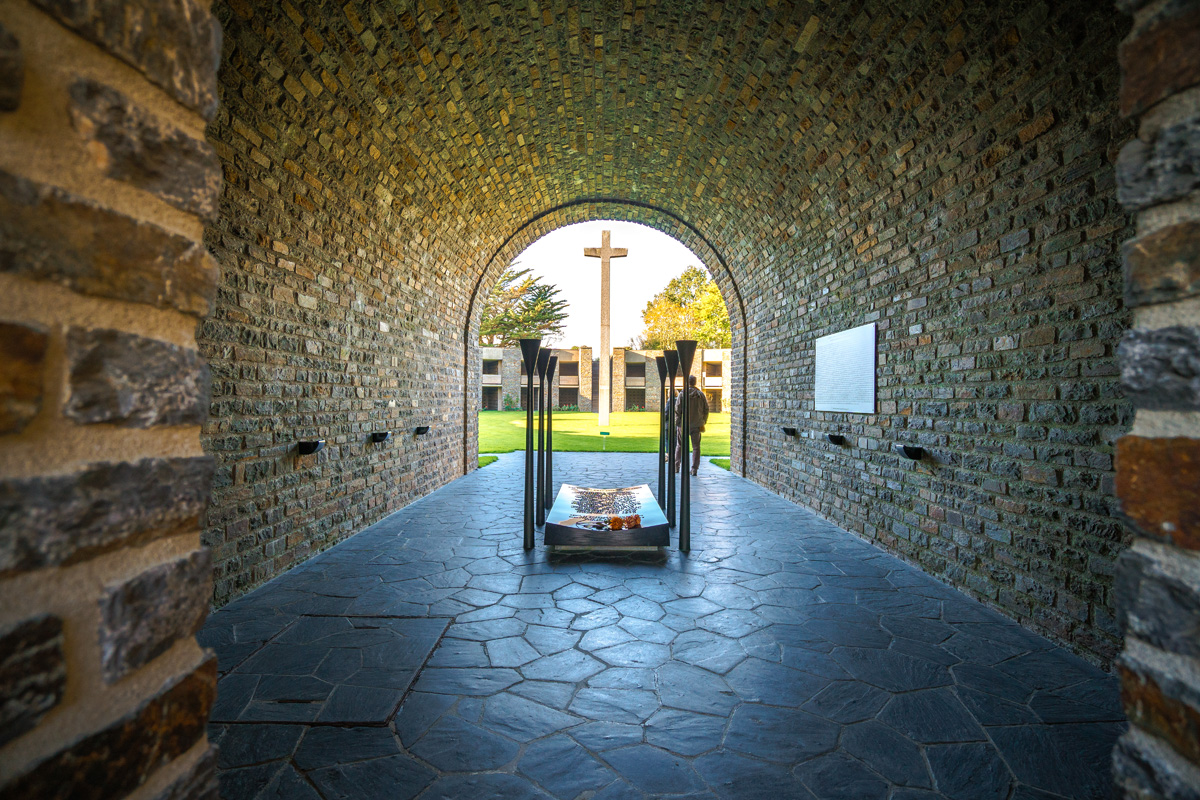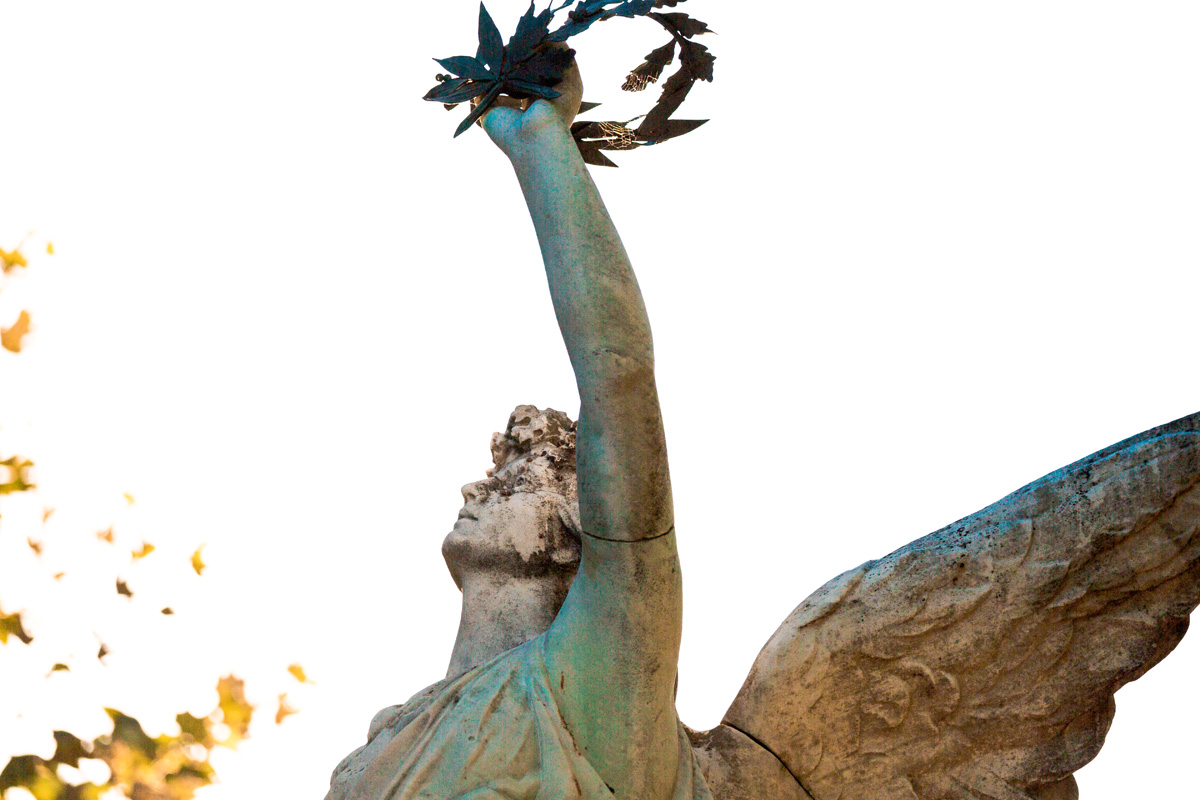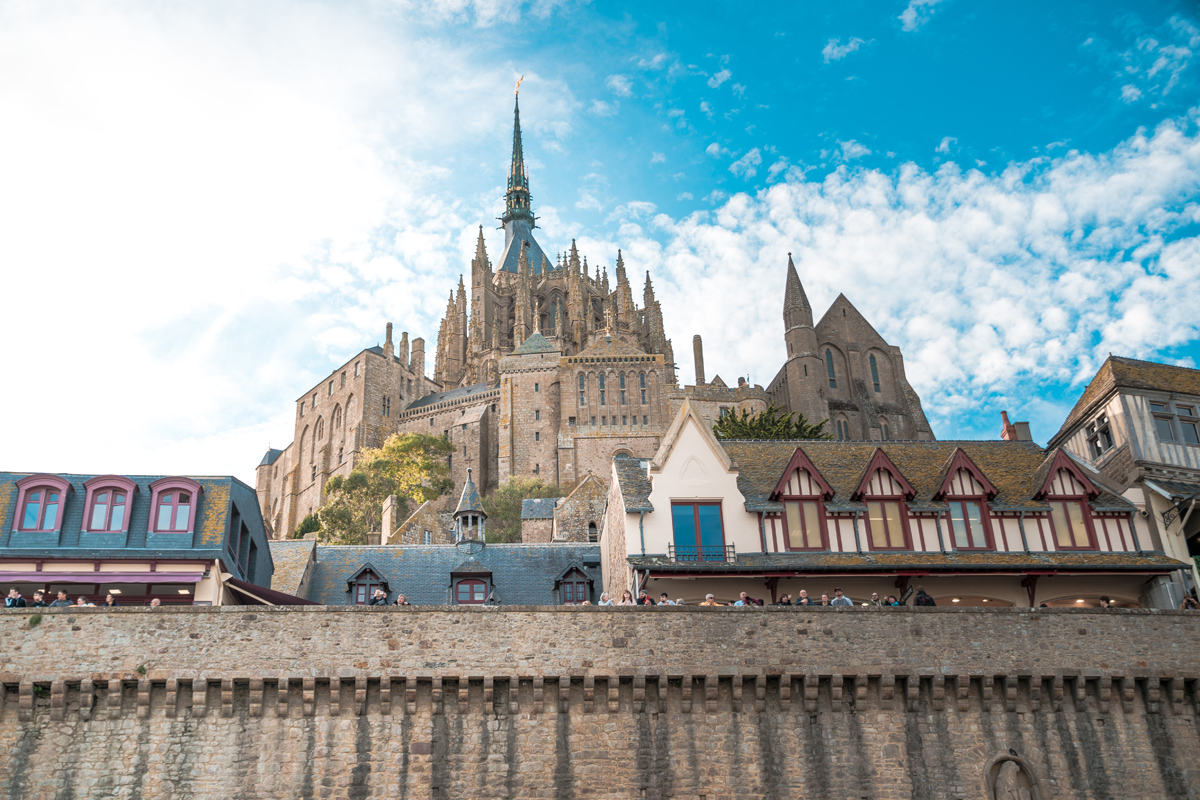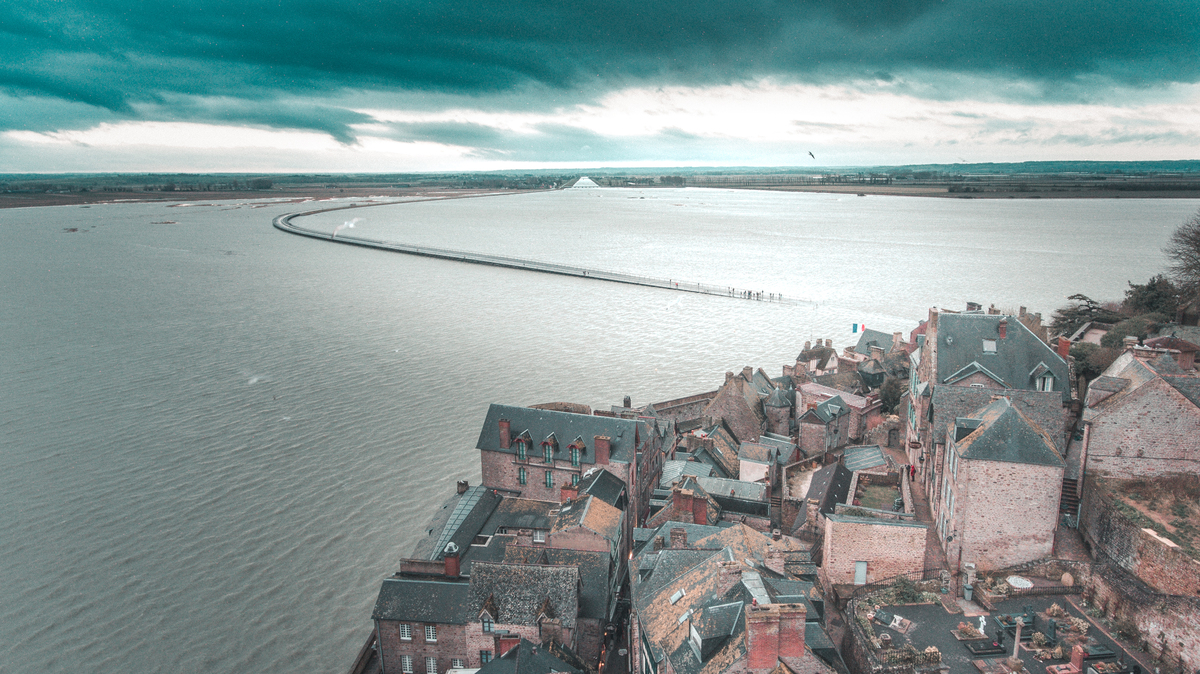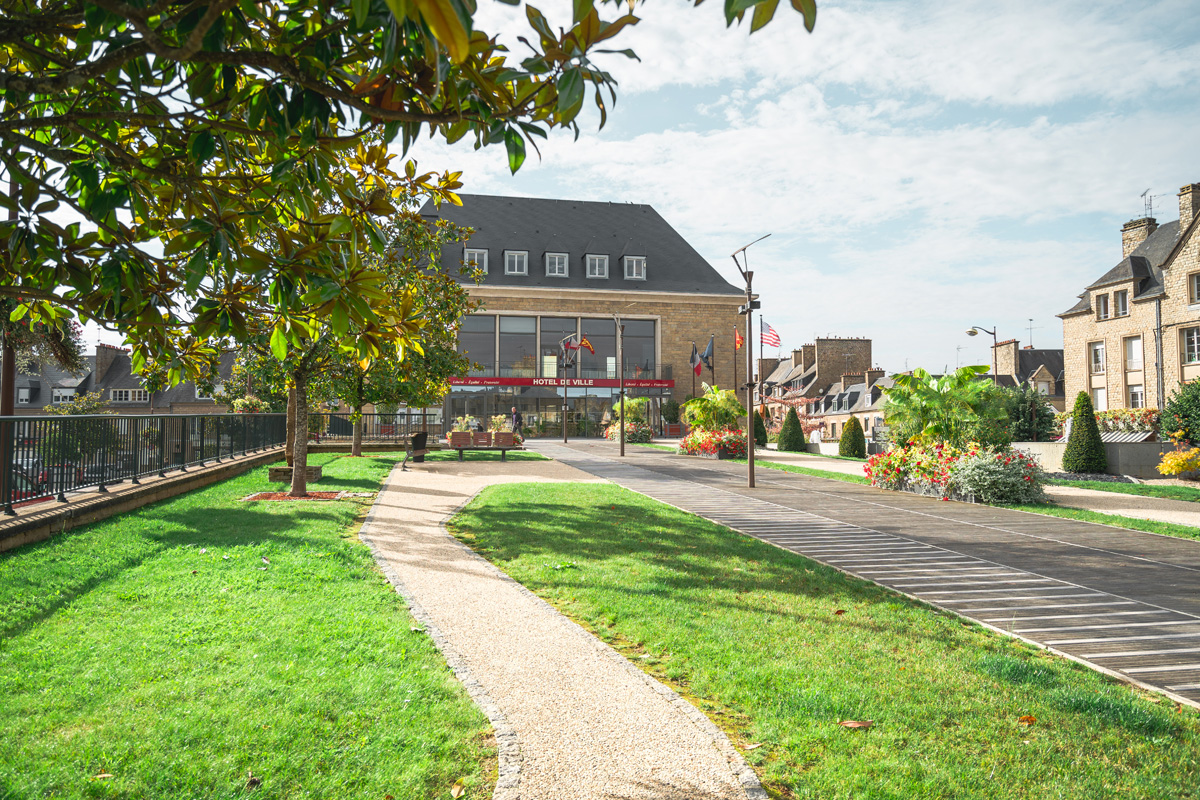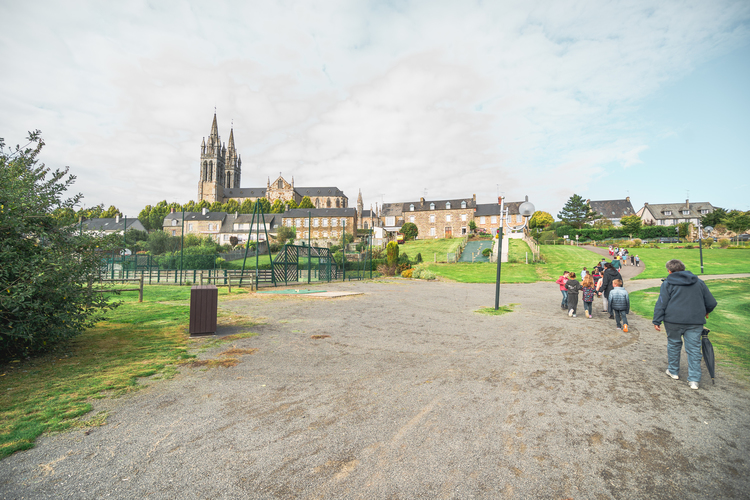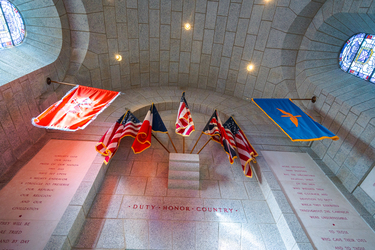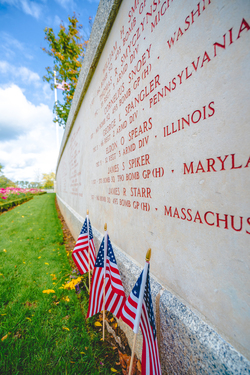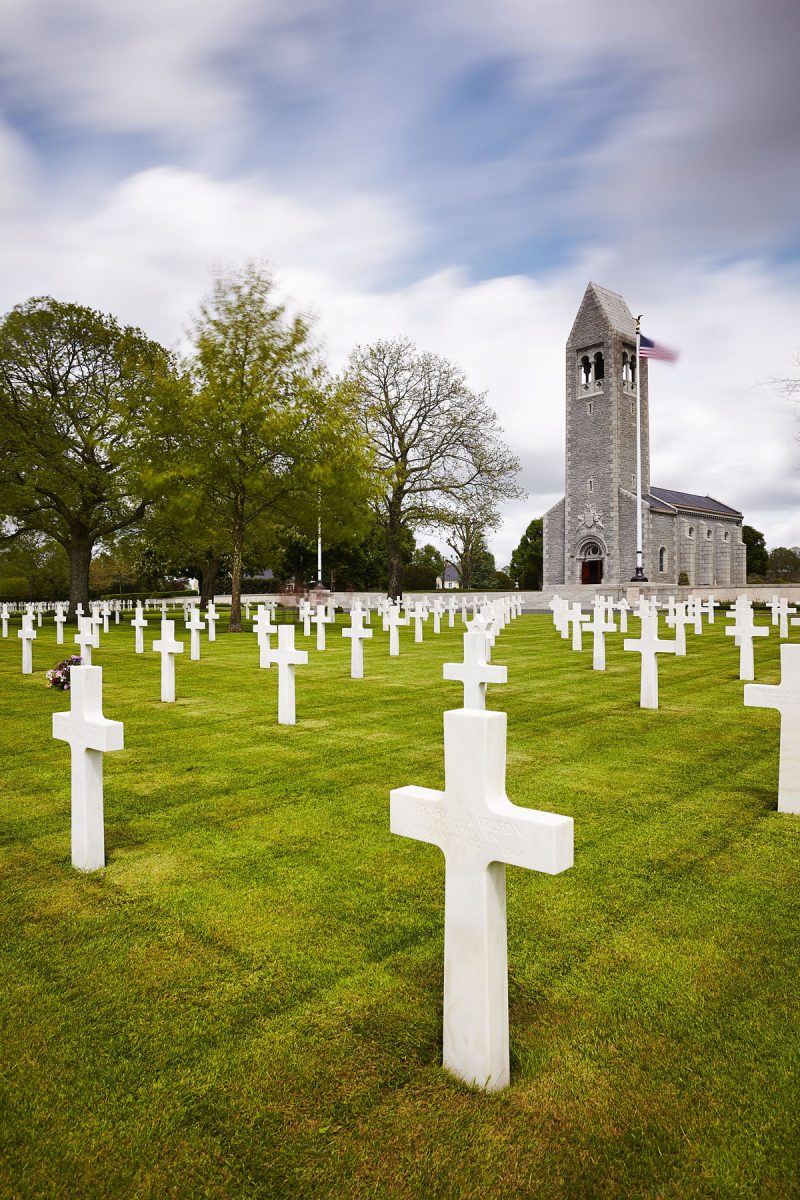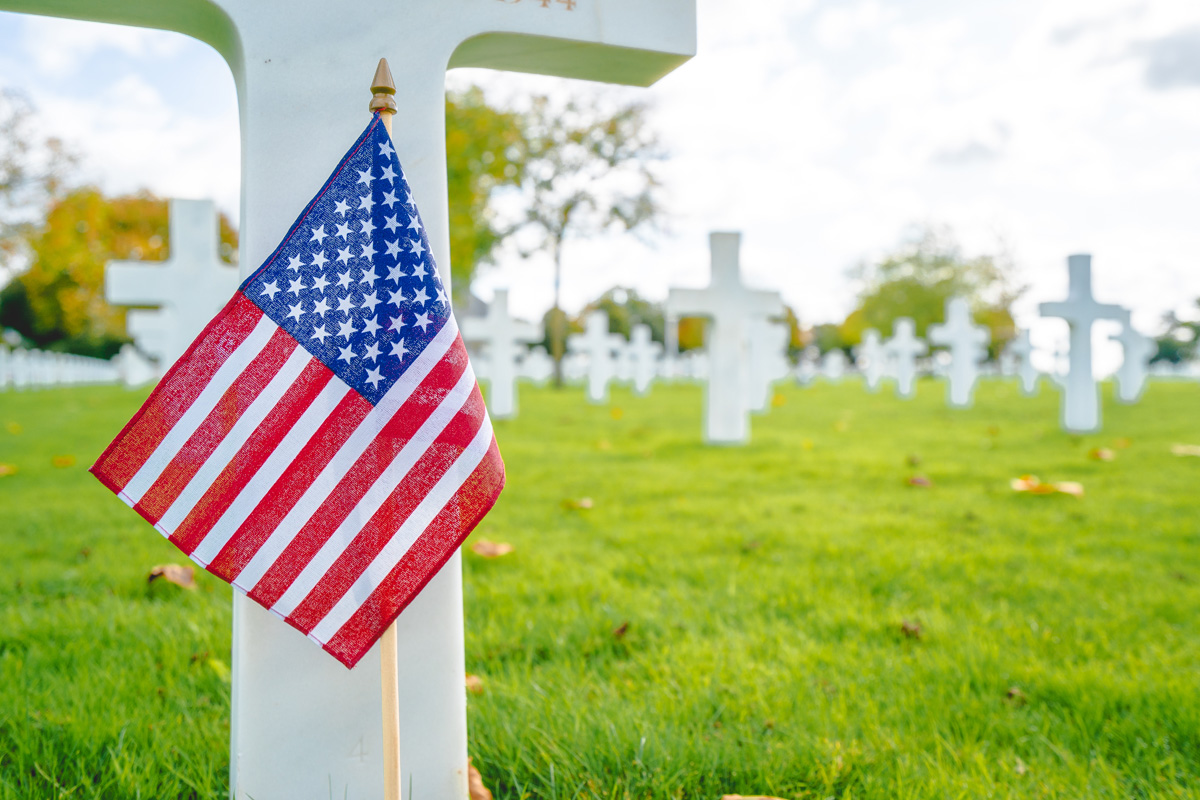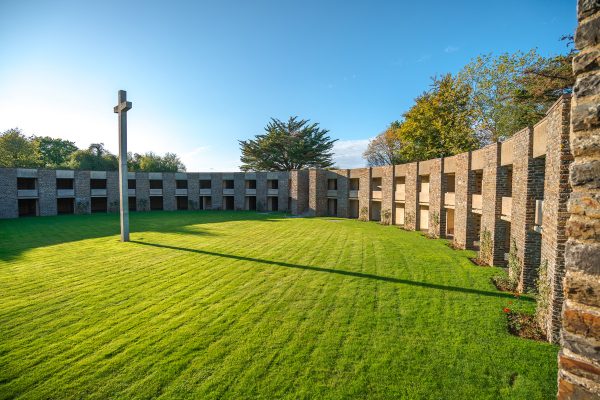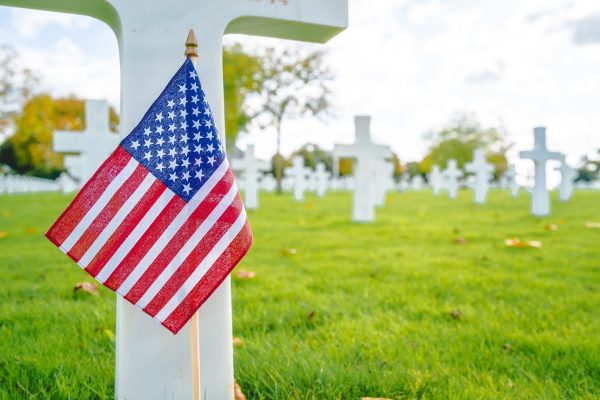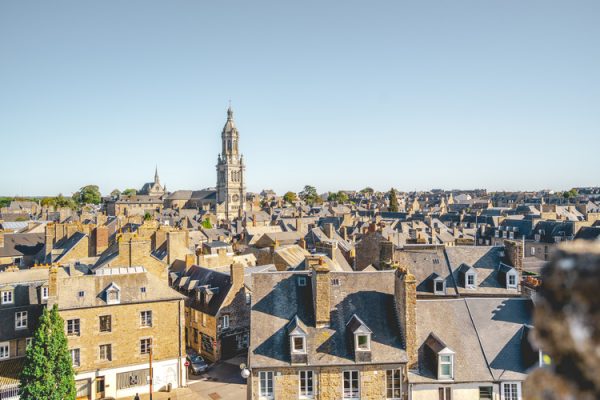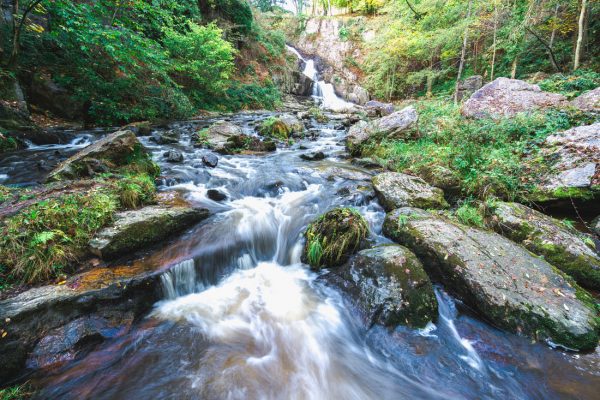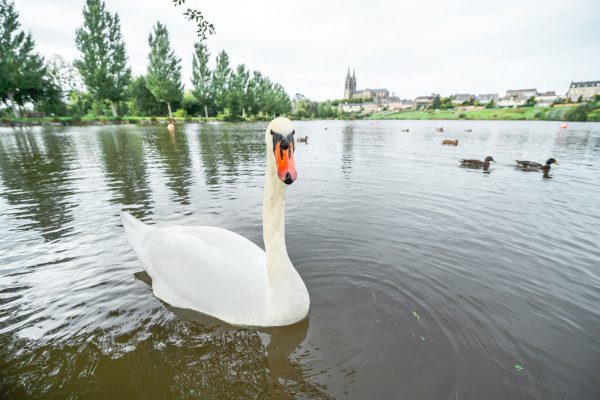On 6 June 1944, the Allies landed on our Normandy coast to liberate France, occupied by Nazi Germany since the summer of 1940. After weeks of intensive fighting, Avranches was liberated on 30 and 31 July 1944 by Patton’s army, which continued on its way to Paris.
Liberty road
Along our roads, from Villedieu-les-Poêles to Saint-Malo, stone markers decorated with a flame emerging from the water now form part of the scenery. They symbolise the “Liberty Road”, the route taken by General Patton’s Third American Army.
A Sherman tank in the town centre
General Patton was the liberator of the town of Avranches, and a square named after him commemorates what is known as the “Avranches Breakthrough”. Avranches was a strategic hub of the Battle of Normandy, opening the way to Brittany and Paris. Extensively bombed in the summer of 1944 by the Allies, today, the town is a fine example of reconstruction: with its 1950s houses, borrowing beautiful references from mediaeval construction.
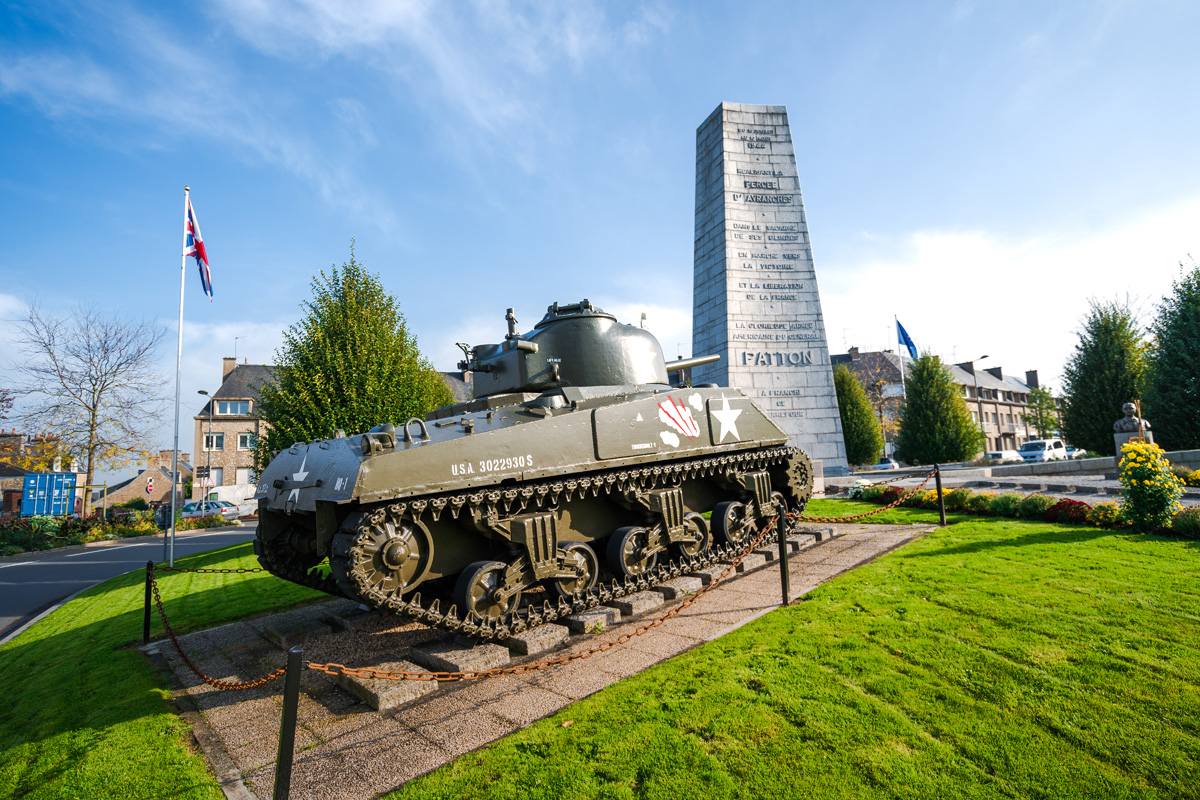
“The fate of the war depended on a bridge” P. Carell
On the way down to Brittany, we pass through Pontaubault and its two bridges. One of them, made of steel and which we can see from afar, was bombed in July 1944 and had allowed the passage of railroad lines since the 19th century
But it is the more discreet bridge that, as it is often said here, changed the fate of the war. This stone bridge, built on the Sélune River, was targeted by bombing 56 times, but never fell. Over 72 hours, it allowed 7 divisions of Patton’s army to continue on their way towards the liberation of France.

Mont-Saint-Michel, liberation of a symbol
Recently, a new stone marker has appeared at Mont-Saint-Michel. This is primarily symbolic and is not numbered like the others, as the Merveille was not part of Liberty Road. Having become a tourist spot for German soldiers, it was already unoccupied when the Allies arrived on 31 July 1944. Nevertheless, it remains a symbol of Freedom.
The Liberation of the Mortainais
From Pontaubault, and following the course of the Sélune, we arrive at two towns – presenting yet more symbols of the Battle of Normandy in the bay of Mont Saint-Michel.
Saint-Hilaire-du-Harcouët, a martyred town
With almost 80% of the town destroyed, Saint-Hilaire-du-Harcouët was considered by the Allies as a crossroads on the Caen-Rennes road that could be used by the German army. The town was therefore massively bombed during the first half of June 1944. As soon as the war ended, reconstruction began. Later, on 10 June 1945: General de Gaulle would inaugurate the first reconstructed house in Saint-Hilaire-du-Harcouët, on Boulevard Victor Hugo.
Mortain and Hill 314
Continuing eastwards, we arrive at Mortain-Bocage. During the Battle of Normandy, the heights of the town bore the military name of Hill 314. From 6 to 12 August 1944, Allies and Germans clashed in what is known as “The Mortain Counter-Attack”. Today, in memory of its battles, a monument stands at the top of Mortain-Bocage, near the Petite Chapelle Saint-Michel.
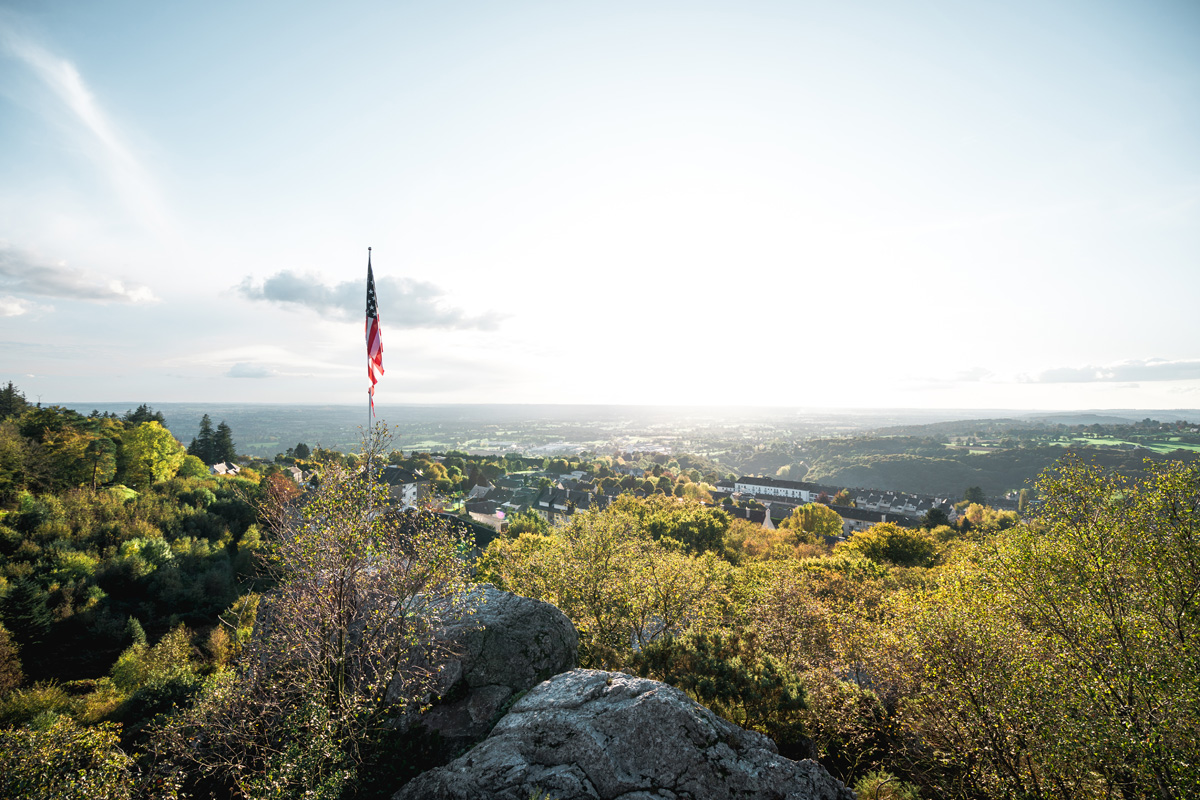
From one cemetery to another
There are two military cemeteries in our region where the remains of soldiers who fell during the Battle of Normandy are buried. An American cemetery, in Montjoie-Saint-Martin, near Saint-James, and a German cemetery, in Huisnes-sur-Mer, opposite Mont-Saint-Michel.
The American Military Cemetery of Brittany
On the Breton border, in a cemetery inaugurated on 20 July 1956, lie the remains of 4,410 soldiers who died after the liberation of Saint-Lô. Located on a ’montjoie’, the site was chosen by the United States for its view of the Mont Saint-Michel, and its proximity to the battlegrounds of the Breakthrough and the Counter-Attack.
The German Military Ossuary
The mausoleum of Mont d’Huisnes is the only German mausoleum in France. Inaugurated on 14 September 1963, it holds the remains of 11,956 German men, women and children who fell during the Second World War in Western France and the Channel Islands.
